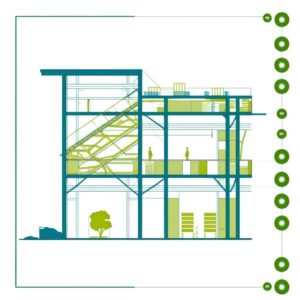What a brilliant mind who has thought and discovered the way to use the people walking/ moving on the way (both pedestrian & vehicular movements. This technology named as “kinetic footfall” can be a major source of energy generation infrastructure if it gets installed on the streets of most busy streets namingly Aamchi Mumbai, The Empire city – New York or can be any city where people love/ prefer to walk to work and fro.
For the people who don’t know what kinetic footfall is, Kinetic footfall is the source of electricity that captures the energy from human footsteps and generates electrical energy. Kinetic Footfall is the latest innovative technology majorly can be used in civil engineering/ Infrastructure Sector. It’s quite simple, the Energy harvesting floors are easy to install and are environmentally adaptable, as they receive input from human footprints without interfering with pedestrians’ daily lives. These systems on the other hand do not release any harmful pollutants into the environment system and can be helpful for reduced natural resources. Overall, Kinetic footfall is the or can be smart energy network.
According to researchers, The demand for kinetic footfall energy harvest is expected to grow exponentially, as it will be the world of EVs. The growth of the kinetic footfall energy harvest market is primarily attributed to growing energy demand, coupled with the development of sustainable technologies to reduce the carbon footprint.
This new sophisticated technology can collect, convert kinetic energy into electricity and pass it on to the electricity grid and also for improving road safety, the device upgrades and promotes sustainability of road innovation in construction
Lets pledge to lead the world to a better world with our falling steps.!!!





